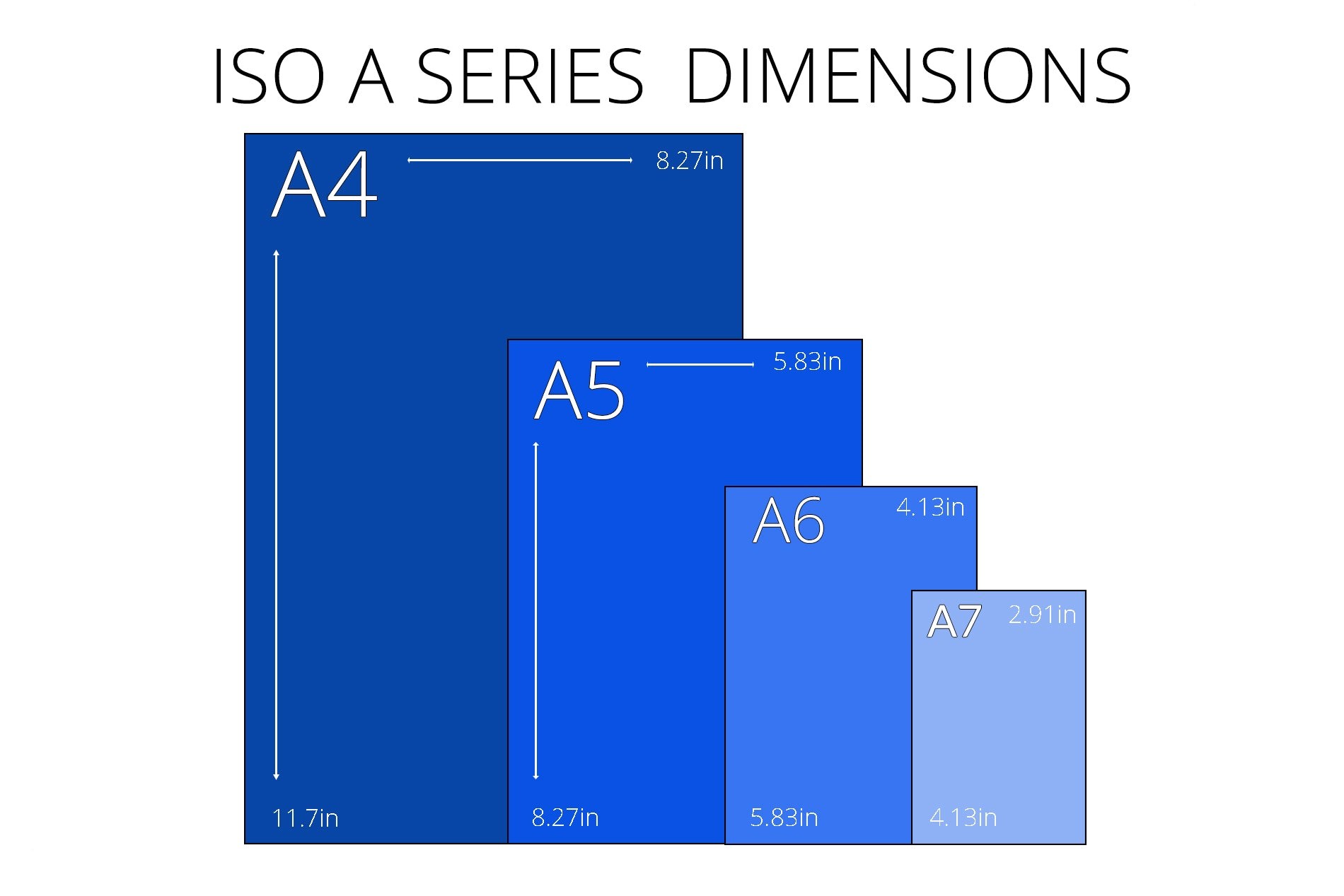Understanding paper sizes can be confusing when faced with various standards and codes. This guide clarifies the differences between common paper sizes, focusing on the key question: How Big Is A5 Compared To A4? We’ll explore the ISO and ANSI systems, providing clear comparisons and visuals to help you choose the right paper for your needs.
Decoding Paper Size Codes: ISO and ANSI
Paper sizes are standardized using two main systems: the International Standard (ISO) and the American National Standards Institute (ANSI). Most notebooks sold internationally adhere to the ISO standard, utilizing the A and B series. The letter denotes the series, while the number indicates the size within that series. Lower numbers represent larger sizes (e.g., A4 is larger than A5).
The ISO A Series: A System of Halves
The ISO A series is built on a unique 1:√2 aspect ratio. This ratio allows each size to be exactly half the size of the next larger size when folded in half, maintaining the aspect ratio throughout the series. For example, A0, the largest size, is a square meter. A1 is half of A0, A2 is half of A1, and so on.
While sizes like A0, A1, A2, and A3 exist, they are less common in notebooks due to their large dimensions. The most frequently encountered sizes are A4 and A5.
As this image illustrates, an A4 sheet cut in half horizontally (hamburger style) results in two A5 sheets. Similarly, dividing an A5 sheet in half produces two A6 sheets.
This halving principle continues down the series: two A7 sheets make up one A6.
The ISO B Series: The Slightly Wider Cousin
The ISO B series follows the same numbering logic as the A series but with slightly different dimensions. Each B size is slightly larger than its corresponding A size counterpart. In a size comparison, the order would be A4, B5, A5, B6, A6, and so on.
The B5 size, falling between A4 and A5, offers a popular middle ground, often preferred for journaling.
The ANSI Series: The North American Standard
The ANSI A size is the familiar 8.5″ x 11″ letter paper commonly used in North America. Unlike the ISO system, larger ANSI sizes are denoted by subsequent letters (A, B, C, etc.), with each size doubling the previous one.
The ANSI A size is very similar to the ISO A4 size, making A4 a suitable alternative for those seeking an internationally recognized standard.
Choosing the Right Size for Your Needs
A4 is versatile for note-taking, offering ample space. B5 provides a comfortable middle ground between A4 and the more portable A5. A5 is ideal for a variety of uses, including planners, journals, and notebooks. A6 is suitable for smaller notes and lists, while pocket-sized notebooks offer ultimate portability.
Paper Size Dimensions Cheat Sheet
Here’s a quick reference guide for common paper sizes:
ISO A Sizes (mm/inches):
- A4: 210 x 297 / 8.27 x 11.69
- A5: 148 x 210 / 5.83 x 8.27
- A6: 105 x 148 / 4.13 x 5.83
- A7: 74 x 105 / 2.91 x 4.13
ISO B Sizes (mm/inches):
- B5: 182 x 257 / 7.17 x 10.12
- B6: 128 x 182 / 5.04 x 7.17
ANSI A Size (inches):
- ANSI A: 8.5 x 11
This guide offers a clear understanding of various paper sizes, particularly highlighting the relationship between A4 and A5. Remember, A5 is half the size of A4, achieved by cutting an A4 sheet in half horizontally. Choosing the right size depends on your specific needs, from detailed note-taking to pocket-sized portability.
